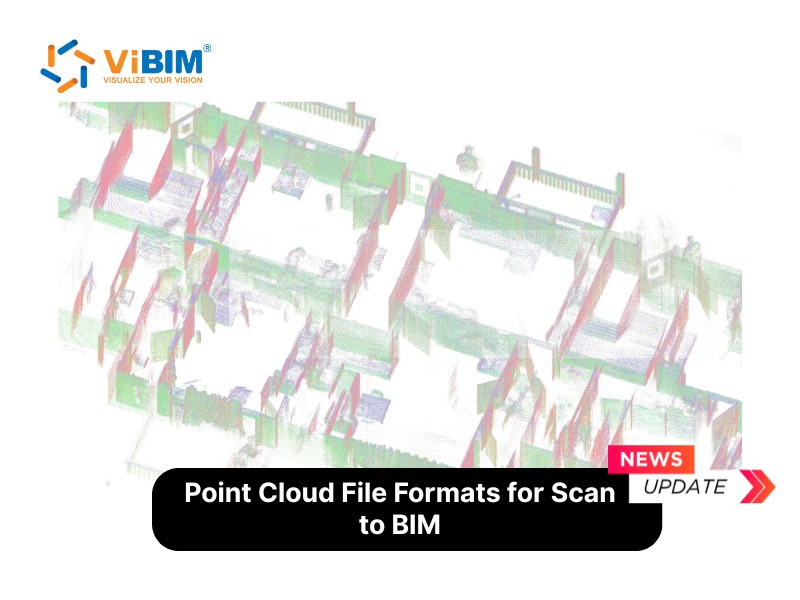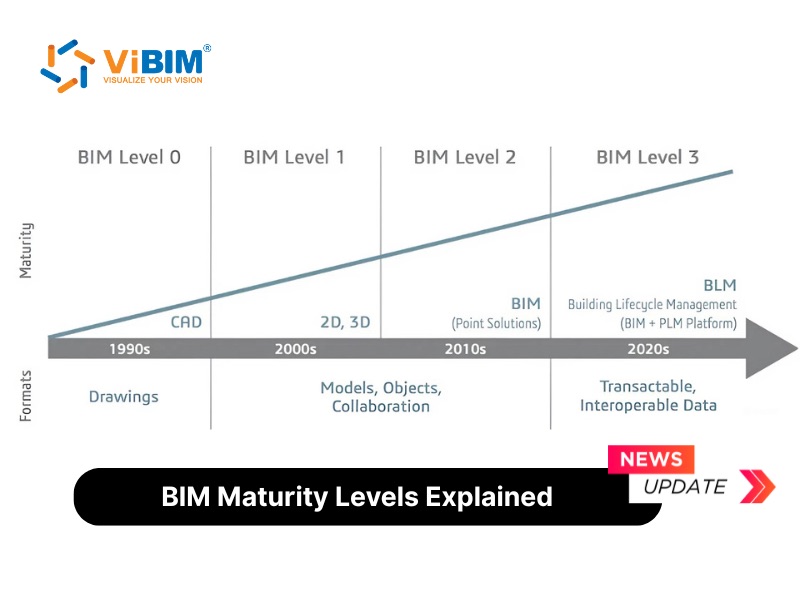Building Information Modeling (BIM) creates a parametric digital model of a building, incorporating detailed information about its components and systems. To understand the specific ways BIM can revolutionize your construction projects, explore this post. We will delve into the top 9 benefits of BIM in Construction, illustrating how it can optimize your workflows, reduce expenses, and ultimately lead to enhanced outcomes.

Top 6 benefits of BIM in Construction
BIM (Building Information Modeling) offers a multitude of advantages that address many of the long-standing challenges faced in the construction industry. By integrating data and visuals into a single, accessible model, BIM fosters smarter, faster, and more reliable project delivery. Let’s explore 6 key benefits of BIM in construction:
Enhanced Design Visualization and Accuracy
BIM enhances design visualization and accuracy by providing detailed 3D models and automated clash detection, which can reduce on-site rework. This comprehensive 3D visualization allows all stakeholders to understand the design intent and make informed decisions before construction begins. Unlike with traditional 2D drawings, BIM’s automated clash detection identifies potential conflicts such as pipes running through structural beams within an integrated federated model during the design phase. This integration is typically managed with tools like Navisworks software, which specializes in clash detection and model coordination. Resolving these issues before construction starts reduces material waste and project delays, leading to fewer Requests for Information (RFIs).
Furthermore, BIM improves accuracy through advanced performance simulations. Designers can virtually test and refine key aspects of the building before construction, including:
- Energy Analysis: To optimize HVAC systems and reduce long-term operational costs.
- Lighting Simulation: To analyze daylighting and ensure occupant comfort.
- Structural Analysis: To test load-bearing capacities under various conditions.
For instance, running an energy simulation might reveal that upgrading the window glazing specification could reduce the building’s annual cooling costs by 15%, ensuring the final design is both functional and efficient.

Increased Collaboration and Coordination
BIM improves collaboration by creating a centralized digital model where all stakeholders can access, share, and update project information in real-time. Stakeholders, including architects, engineers, and contractors, can review, comment, and resolve issues instantly, regardless of location. For example, when an architect updates a window specification in the central model, the structural engineer and the energy consultant receive the update in real-time, eliminating the delays and potential for error associated with exchanging multiple separate files. This single source of truth minimizes misunderstandings and improves cross-disciplinary coordination, allowing decisions to be made faster and with greater confidence throughout the project lifecycle.

Accurate Cost and Time Estimations
BIM enhances the accuracy of cost and time estimations by integrating data-rich 3D models, automating processes, and enabling precise planning through advanced tools like 4D (time) and 5D (cost) modeling. Futhermore, BIM’s clash detection identifies design conflicts early, preventing costly rework during construction. Resolving these issues before work begins can reduce budget overruns.
Automated quantity takeoffs generated directly from the model provide highly accurate material estimates, improving budget accuracy and significantly reducing procurement waste. By identifying potential risks like design errors and logistical issues early, BIM ensures more reliable project schedules, reducing the overall project delivery time.
Sustainability and Energy Efficiency
BIM enhances sustainability and energy efficiency in construction projects by integrating data-driven design, simulation, and analysis tools that optimize resource use, reduce environmental impact, and improve building performance.
Early in the design process, models can be used for various analyses, including energy performance simulation, solar studies, and daylighting analysis. This allows designers to optimize building orientation, façade design, material selection, and HVAC systems for maximum energy efficiency and minimal environmental impact. By integrating sustainability considerations from the outset and evaluating the lifecycle impact of different design choices, BIM helps create buildings that are not only cost-effective to operate but also contribute positively to environmental goals, reducing carbon footprints and resource consumption.

Improved Facility Management
One of the key advantages of using bim for facility management is that the models include data such as specifications, manufacturer details, maintenance schedules, warranty information, and operational manuals. Accessing this structured data significantly supports efficient building operation post-construction, simplifies maintenance planning, optimizes building operations, and makes future renovations or retrofits much easier and more efficient, leveraging the detailed digital record throughout the building’s lifecycle.

Improves Occupational Safety and Health (OSH)
BIM improves occupational safety and health (OSH) by enabling proactive hazard identification and safer construction planning, which can reduce on-site safety incidents. Using the 3D model, clash detection tools identify potential design conflicts and site logistics issues before construction begins, preventing unsafe on-site adjustments. Furthermore, 4D BIM simulates the construction process, allowing teams to create safer work sequences by scheduling high-risk tasks during periods of lower on-site activity. The central model also enhances worker preparedness through virtual safety walkthroughs and training, familiarizing crews with site-specific hazards. Finally, BIM reduces on-site risk by facilitating the off-site fabrication of components, which minimizes hazardous activities like welding and working at heights.
For instance, by simulating the assembly of a steel frame, a safety manager can identify the exact locations where fall protection nets are required before workers ever set foot on site.

BIM-Based Construction vs. Traditional Construction
The differences between BIM-driven projects and those using traditional methods are stark, impacting collaboration, visualization, and overall management.
| Feature | BIM Approach | Traditional Approach |
| Collaboration | Centralized, shared model; real-time updates; integrated platform for all stakeholders; reduced communication silos. | Fragmented communication (emails, calls, paper); separate documents; potential for misinterpretations and delays. |
| Design & Visualization | Intelligent 3D models; clear visualization for all; automated clash detection; data-rich elements. | Primarily 2D drawings; difficult to visualize complex areas; manual clash checks; disconnected information. |
| Project Management | Integrated data management; single source of truth; streamlined workflows; enhanced analytics and reporting; proactive risk mitigation. | Fragmented data across multiple sources; manual tracking of changes; prone to errors and data loss; reactive problem-solving. |
| Cost & Time Efficiency | Enables more accurate cost forecasting and efficient resource management; minimizes material waste and construction time due to tight integration. | Potential for material losses and increased costs due to less effective resource management and scheduling inefficiencies. |
| Quality & Accuracy | Provides high-accuracy digital models; facilitates clash detection and pre-construction simulation/analysis, ensuring higher final quality. | Higher potential for construction errors due to limited interdisciplinary coordination and less robust quality control. |
In conclusion, 6 key benefits outlined in this article clearly show the transformative power of BIM across the entire lifecycle of a construction project. As the construction industry continues to grow and develop, embracing BIM will undoubtedly be a key factor in achieving more efficient, sustainable, and ultimately, more successful construction endeavors.
Ready to bring these benefits to your projects?
ViBIM’s expert Revit modeling services are the key to unlocking enhanced accuracy, seamless collaboration, and significant cost savings. Let us help you transform your vision into a data-rich, efficient reality.

















